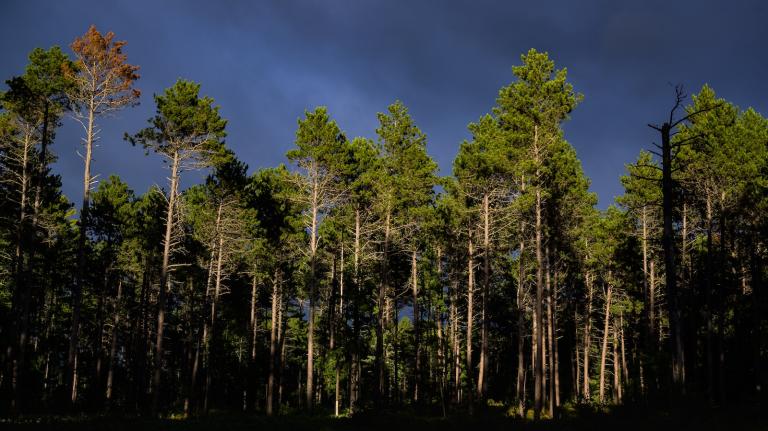This is part two of my interview with Michael Liebreich, head of Bloomberg New Energy Finance. See part one.

Michael Liebreich.
Q. The coal industry says the natural gas boom will burn itself out and coal will have a resurgence. Plausible?
A. The median age of a U.S. coal plant is something like 41 years. Once they’re shut down, it’s hard to see them being mothballed, lovingly maintained by really old caretakers, and then being unmothballed. I’m seeing it as a sunset for traditional, old-style, inefficient coal plants.
Is it possible they’ll start building new supercritical and ultracritical plants? It’s just possible, but I don’t think it’s very likely. It’s more of a tobacco model: The tobacco companies realize the jig is up in terms of recruiting kids in the U.S., so they focus on the developing world. They’ll be trying to export their coal to Asia. Demand in the U.S. is not coming back.
Q. The story one usually hears about coal demand in Asia is: huge growth out to forever (and thus the planet is screwed, climate-wise). Do you see anything to complicate that story or mitigate that pessimism?
A. The dash for coal in India and China has been built on the premise of $40 [per ton] coal. Look at the prices in Asia now — we’re talking about $120 coal. Obviously that’s a fantastic market to export the coal that’s not being used in the U.S., so it will probably bounce back down, but there are other interesting dynamics.
First of all, about the helter-skelter growth in Chinese energy demand — people have been mesmerized by 2000 to 2007, which was the peak period of urbanization and the capture of heavy industry. China’s not going to be doing that forever. Already we see China putting pretty harsh targets in place on the energy intensity of its economic growth, trying to pull out 40 percent reductions in energy intensity between now and 2020. So the demand is not growing as fast as it was.
And now you see them worrying about air quality. Where is China on the Kuznet’s curve? You could argue that they’re reaching the peak. When I first went to Seoul, it was a horribly clogged city with air quality problems. I’ve been back in recent years and they’re clearly over the top of [the curve]. They’re talking green growth, they’ve restored the river through the city, you can see the mountains around Seoul — I didn’t even know there were mountains when I went in the ’90s. It’s clear that Shanghai and Beijing don’t want to live in this air soup. They want a decent quality of life as they get wealthier.
The other thing that’s happening is, coal suppliers in Asia are not as docile. The big supplier in Asia is Indonesia. It’s tired of selling cheap coal and seeing China growing at 9, 10 percent a year when it’s only growing at 4, 5 percent a year. They’re restricting sales. They’ve said by 2014 they don’t want to be selling coal at all. They want the industry to come to Indonesia.
We see these dynamics in the familiar statistic that China is building one coal-fired power plant a week. That’s not true — now they’re only building one every two weeks! You laugh, but you know what? One every two weeks is 50 percent of the build rate of one every week. And it’s not going to bounce back. It’s not just because their economy is slowing, though it is, but because the structure of their economy is changing and their tolerance of environmental problems is changing.
Now, theoretically Indonesia could industrialize and start building a power station a week, but I don’t think anybody in the history of the world is ever going to replicate what China went through from 2000 to 2010.
Q. Another version of the pessimistic story is that after China stops accepting dirty industry and coal pollution, it will just migrate somewhere else. The total quantity doesn’t decline.
A. There will be a large element of that. The question is, where else in the world is there a 1.3 billion-strong economy that can turn on a dime and start accepting all that heavy industry? It wasn’t just the industry that moves around, it was China’s infrastructure being built at the same time — urbanization, airports, trains, all the cement and steel that goes into that. Will there be some proportion of that industry migrating to Vietnam or Thailand or Bangladesh or Africa? Yeah, there will. But I just don’t think we’re going to see a 1.3 billion-person area of the world growing at 10 percent a year for 20 years. It’s hard to see where that would be. Could it be India? Some states will do it. But it’s hard to see how it’s going to do it straight across that chaotic economy.
While China in the year 2000 may have said, “filthiness is not an issue,” now we’ve got a whole bunch of cleaner technologies, whether it’s supercritical power generation, more efficient or gas-based generation, wind and solar and so on — there’s just so much more understanding of clean energy now than there was in China in 2002, when a lot of these decisions were being made. We’re in a different place; the world is more educated.
I’m not saying we’re going to see anything turn on a dime, but the trends are inexorable. The price of coal, the understanding of externalities, the understanding of clean technologies — we’re never going to see that period of rapid coal development again. I can almost persuade myself!
Read part three of this interview.



